Best deadlift grips compared
Best deadlift grips compared

Deadlifting is one of the most effective exercises for building strength, muscle mass and power. It works your entire posterior chain, from your calves to your traps, and also engages your core, arms and grip.
But how you hold the bar can make a big difference in your performance, comfort and safety. There are various types of hand grips and positions you can use when deadlifting, each with its own pros and cons.
In this article, we will compare the most common deadlift grips: double overhand grip, mixed grip, hook grip, snatch grip and axle grip. We will also give you some tips on how to improve your deadlift grip strength and technique.
There is a really helpful video at the end which will explain the 3 most important ones with a step by step guide showing you how to do them.
Double Overhand Grip
The double overhand grip is the simplest and most natural way to hold the bar. You just grab it with both palms facing you, wrapping your thumbs around the bar.
This grip is ideal for beginners, as it promotes symmetrical development of grip strength and avoids muscular imbalances that can result from long-term mixed grip use. It also allows you to keep the bar close to your body, which improves your shoulder and upper-back position.
However, the double overhand grip is also the weakest grip, as it relies solely on your finger strength to prevent the bar from rolling out of your hands. This can limit how much weight you can lift, especially on heavy sets or high reps.
To use the double overhand grip effectively, you need to have a strong grip and chalk up your hands to reduce slippage. You can also use straps to assist your grip on your heaviest sets, but don’t rely on them too much or you will neglect your grip development.
How to Do the Double Overhand Grip Deadlift
- Approach the bar and set your foot stance perfectly centered between the plates.
- Grip the bar using a comfortable distance between each hand, typically shoulder-width apart or slightly wider.
- Grip the bar in each hand flush where the fingers meet your palm. You want to press your hand against the bar in the highest part of the palm to avoid pinching your flesh as you wrap your fingers around the bar.
- With both palms facing down, close your hand around the bar to secure your grip.

Mixed Grip
The mixed grip is a variation of the double overhand grip, where you alternate one hand in a pronated position (palm facing you) and one hand in a supinated position (palm facing away).
This grip allows you to lift more weight, as it prevents the bar from rolling out of your hands by creating a counterbalance effect. It also helps you overcome any strength imbalances between your left and right sides.
However, the mixed grip also has some drawbacks. It can increase the risk of biceps tears on the supinated arm, especially if you bend your elbow or curl the bar during the lift. It can also cause muscle imbalances in your forearms, shoulders and back over time if you don’t switch hands regularly.
To use the mixed grip safely and effectively, you need to keep your arms straight and locked at all times. You also need to switch hands every set or every workout to avoid developing asymmetries. You can also use chalk or straps to improve your grip security.
How to do the mixed grip deadlift
- Stand with your feet shoulder-width apart, with your toes pointing slightly outward.
- Place your hands on the bar, one hand underhand and one hand overhand.
- Keep your arms straight and your shoulders back.
- Bend your knees and hips to lower your body until you can grasp the bar.
- Take a deep breath, brace your core, and stand up by straightening your hips and knees.
- Keep the bar close to your body as you lift it.
- At the top of the lift, lock out your hips and knees.
- Lower the bar back to the ground by bending your hips and knees.

Hook Grip
The hook grip is another technique used for deadlifting. In this grip, you wrap four fingers – your index finger to pinky – over the top of the barbell and then trap your thumb under them so that your thumb wraps around the bar under your fingers. The primary benefit of hook grip is that it is as strong (maybe stronger) than mixed grip, but without the asymmetry of mixed grip.
Pros:
- As strong (maybe stronger) than mixed grip.
- Reduces asymmetry compared to mixed grip.
- The added friction of the thumb against the bar also makes the deadlift hook grip slightly better, and subsequently stronger, when compared to a mixed grip.
Cons:
- Can be painful for thumbs.
Who it is best for:
- Olympic weightlifters who are not allowed to use wrist straps during competition.
- Powerlifters who want an alternative to mixed grip.
Tips:
- Tape your thumbs for added protection.
- Start light and gradually increase weight as you get used to the hook grip.
- Practice using the hook grip on other exercises.
- Use chalk for added friction.
- Be persistent – it may take time to get used to this technique.
The Hook grip is my personal favourite. I always seem to be able to perform better using this grip for some reason.
How To Do The Hook Grip Deadlift
- Stand with your feet shoulder-width apart, with your toes pointing slightly outward.
- Place your hands on the bar with a hook grip – wrap four fingers over the top of the barbell and then trap your thumb under them so that your thumb wraps around the bar under your fingers.
- Keep your arms straight and your shoulders back.
- Bend your knees and hips to lower your body until you can grasp the bar.
- Take a deep breath, brace your core, and stand up by straightening your hips and knees.
- Keep the bar close to your body as you lift it.
- At the top of the lift, lock out your hips and knees.
- Lower the bar back to the ground by bending your hips and knees.
More Knowledge
I hope the information contained in this article was useful. Let me know if you have any suggestions or questions in the comments.
The Ultimate Guide to the Best Forearm Exercises for Grip Strength, Muscle Growth and Injury Prevention
The Ultimate Guide to the Best Forearm Exercises for Grip Strength, Muscle Growth and Injury Prevention

Forearms are one of the most neglected body parts when it comes to training. Many people focus on their biceps, triceps, chest and back, but forget about their forearms. This is a big mistake, because forearms are not only important for aesthetic reasons, but also for functional and health reasons.
Forearms are involved in almost every upper body movement, from lifting weights to opening jars. They help you grip and hold objects, stabilize your wrists and elbows, and transfer force from your arms to your hands. Having strong forearms can improve your performance in sports and daily activities, as well as prevent injuries and pain in your wrists, elbows and shoulders.
In this article, you will learn about the anatomy of the forearms, what each of the important muscles do, and how to train them effectively with 10 of the best forearm exercises. You will also learn how to incorporate these exercises into your routine, how often to train your forearms, and what equipment you need.
Anatomy of the Forearms
The forearms consist of two long bones: the radius and the ulna. The radius is located on the thumb side of the forearm, while the ulna is on the pinky side. These two bones are connected by an interosseous membrane, which allows them to rotate around each other. This rotation is called pronation (turning the palm down) and supination (turning the palm up).
The forearms also contain many muscles (19 in total) that can be divided into two groups: flexors and extensors. The flexors are located on the anterior (front) side of the forearm, while the extensors are on the posterior (back) side. The flexors are responsible for bending (flexing) the wrist and fingers, while the extensors are responsible for straightening (extending) them.
Here are some of the muscles on the anterior side.

The forearms contain the following muscles:
- Flexor carpi ulnaris
- Palmaris longus
- Flexor carpi radialis
- Pronator teres
- Flexor digitorum superficialis
- Flexor digitorum profundus
- Flexor pollicis longus
- Pronator quadratus:
- Brachioradialis
- Extensor carpi radialis longus
- Extensor carpi radialis brevis
- Extensor digitorum
- Extensor digiti minimi
- Extensor carpi ulnaris
- Supinator
- Abductor pollicis longus
- Extensor pollicis brevis
- Extensor pollicis longus
- Extensor indicis
Each muscle has a very specific and differing job to do. It is a very complicated muscle group and it has to be, when you think about it, your wrist and forearm allows you to twist, and pull things in in multiple directions.
The Best Forearm Exercises
Now that you know the anatomy and function of the forearms, let’s look at some of the best exercises to train them effectively. These exercises will target both the flexors and extensors of the forearms, as well as the pronators and supinators. You can do these exercises with dumbbells, barbells, cables, or your own bodyweight.
E-Z Bar Reverse Wrist Curl
This exercise targets the extensors of the forearms. To do it, sit on a bench and hold an EZ-bar with an overhand grip, resting your forearms on your thighs. Curl your wrists up as high as you can, then lower them back down. Repeat for the desired number of reps.
You can adapt this by trying it with a barbell or dumbbells. Here is a video showing good form:
Dumbbell Wrist curls
This exercise targets the flexors of the forearms. It is probably the best forearm exercise you can do for strong, functional arms with great grip.
To do it, sit on a bench and hold a dumbbell in each hand with an underhand grip, resting your forearms on your thighs. Curl your wrists up as high as you can, then lower them back down. Repeat for the desired number of reps.
To make them even more effective, start by opening your hands in a controlled, slow manner, rolling the weight down onto your fingertips, before rolling the weight back up into your fist and curling it.
Again you can adapt these and do them with barbells or dumbbells. If you are using enough weight, these will give you a strong burn in your forearm, you will really feel them working.
Here is a video to show you what good form looks like. Keep in mind this video does not include the rolling of the weight down to the fingers that I just described. I would save this for once you have been training forearms for at least a month or so.
Dumbbell Wrist Extension
This exercise targets the extensors of the forearms. To do it, sit on a bench and hold a dumbbell in each hand with an overhand grip, resting your forearms on your thighs. Curl your wrists down as far as you can, then raise them back up as far as you can. Repeat for the desired number of reps.
This exercise is more effective if you hold the dumbbell with the little finger side of your hand as close as possible to the plates, leaving a gap on the thumbside – this pushes more weight onto one side and targets the muscle in a much more effective way.
The video below shows how to do this exercise using a bench instead of your thigh:
Hammer Curl
This exercise targets both the flexors and extensors of the forearms, as well as the brachioradialis. To do it, stand up and hold a dumbbell in each hand with a neutral grip (palms facing each other), letting them hang by your sides. Curl the dumbbells up to your shoulders, keeping your palms facing each other. Lower them back down and repeat for the desired number of reps.
Make sure you avoid swinging your whole body to lift the weight as this will not help you at all.
Check out this video explaining good form. (Not as good at spelling though… its a hammer curl not a HUMMER CURL)
Farmer’s Walk
This exercise targets both the flexors and extensors of the forearms, as well as the grip strength. To do it, stand up and hold a heavy dumbbell or kettlebell in each hand by your sides. Walk for a certain distance or time, keeping your shoulders back and your core tight. Avoid dropping or swinging the weights.
Towel Pull-Up
This exercise targets both the flexors and extensors of the forearms, as well as the grip strength and the latissimus dorsi (back muscles). To do it, hang a towel over a pull-up bar and grab one end with each hand. Pull yourself up until your chin is as high as possible, making sure you don’t hit your head on the bar, and then lower yourself back down. Repeat for the desired number of reps.
Here is a great video showing good form
Behind-the-Back Cable Curl
This exercise targets both the flexors and pronators of the forearms, as well as the biceps. To do it, stand in front of a low pulley machine and grab the handle with an underhand grip behind your back. Curl your arm up toward your shoulder, keeping your elbow close to your body. Pause for a second, then lower your arm back down. Repeat for the desired number of reps, then switch sides.
Here is a video from D.R Jim Stoppani explaining good form for this exercise:
Plate Pinch
Plate pinch targets both the flexors and extensors of the forearms, as well as the grip strength and the finger muscles. To do it, grab 2 heavy bumper plates with your thumb and fingers, pinching it between them. Hold it for a set time or until failure, keeping your arm straight and your posture upright. For an additional challenge, walk while pinching the plate.
Aim for as long as possible with this exercise, it is probably best to do this one at the end of your workout as it will fatigue your fingers and grip strength, making it difficult to continue. I personally have a love hate relationship with this exercise. Although it is one of the best forearm exercises, when done for a long time, you really feel the burn.
Take a look at this video to visualise how a plate pinch is done:
Bar Hang
Bar hangs target both the flexors and extensors of the forearms, as well as the grip strength and the latissimus dorsi (back muscles). To do it, jump and hang on a pull-up bar with an overhand grip, keeping your hands shoulder-width apart and your arms fully extended. Hang for as long as you can, or until failure
How to incorporate these forearm exercises into your routine
You can use these exercises to create a forearm workout that suits your goals and preferences. Here are some tips on how to do that:
- Choose 3 to 5 exercises from this list that target different aspects of your forearm muscles (flexion, extension, pronation, supination).
- Perform 2 to 3 sets of 8 to 15 repetitions for each exercise, resting for 60 seconds between sets.
- Do this workout 2 to 3 times per week on nonconsecutive days (for example, Monday, Wednesday, Friday).
- Alternatively you can add one or two forearm exercises to your upper body or arm workouts for extra stimulation.
- Vary your exercises every few weeks or every few workouts to avoid plateaus and boredom.
Now get working on those forearms!
I hope you liked this article. If you did and would like to look at some of our other training articles check out our training page.
Shoulder Sculpting Secrets: Exercises for Massive Delts
Shoulder Sculpting Secrets: Exercises for Massive Delts

Shoulders are an essential part of a well-developed physique. They are the key to having that V-tapered, aesthetic look that many people strive for in their fitness goals. Strong shoulders not only enhance your overall physique, but they also provide the necessary support for your upper body to perform various exercises such as bench press, push-ups, pull-ups, and overhead presses.
Increasing the size of your deltoid muscles will make you look much wider and bigger as they are already almost always the widest points on your body.
The shoulder consists of three main muscles, namely the anterior deltoid, the lateral or medial deltoid, and the posterior deltoid. Each of these muscles plays a significant role in the overall function and appearance of the shoulder. In this article, we will explore some of the best exercises for massive delts, targeting each of these three muscles.
I have been training for 17 years. I am a trained P.T and have been researching muscle building for my whole life – I am going to save you hours, weeks and months of research and give you this information for free.
Shoulder anatomy
When targeting the shoulders you are really trying to hit the three different heads that make up the deltoid muscle group. The anterior deltoid is at the front, the lateral deltoid is at the side, and the posterior is also known as the rear delt. These muscles control all movements where you
- lift your whole arm in front of you
- Lift your whole arm to the side,
- Lift your whole arm to the rear when laying on your front
- + any exercise where you are pushing away from your body above shoulder level.

We have put together a list of great exercises to target each head in the most efficient way for maximum muscle growth.
Check them out below and let us know what you think in the comments
Best exercises for targeting the whole deltoid
Overhead Press
The overhead press is one of the most effective exercises for building massive delts. This compound exercise works all three heads of the shoulder muscles, as well as the triceps and upper back muscles. It involves pressing a barbell or dumbbell overhead, starting from the shoulders and extending the arms fully.
To perform the overhead press, stand with your feet shoulder-width apart, holding a barbell or dumbbells at shoulder height. Press the weight overhead while keeping your core tight and maintaining a neutral spine. Lower the weight back down to your shoulders and repeat for the desired number of reps.

Arnold press
Arnold press is a variation of the overhead press that targets all three heads of the delt muscles, as well as the biceps and triceps. This exercise was popularized by bodybuilding legend Arnold Schwarzenegger, who used it to sculpt his massive shoulders.
To perform the Arnold press, sit on a bench with a pair of dumbbells held in front of your shoulders. Rotate your palms inward, so that they face your body, then press the weights overhead. As you press up, twist your wrists so that your palms face forward at the top of the movement. Reverse the motion as you lower the weights back down to your shoulders and repeat for the desired number of reps.

Advanced: Handstand Push-Ups
Handstand push-ups are an advanced exercise that targets the shoulders, triceps, and upper back muscles. They involve performing a push-up while in a handstand position, using the wall for support.
To perform handstand push-ups, start by getting into a handstand position with your feet against the wall. Lower your head down to the ground, then press back up to the starting position. Repeat for the desired number of reps.

Best exercises for lateral delts
Dumbbell Lateral raise
Lateral raises are a classic isolation exercise that targets the lateral deltoid, the muscle responsible for the width of the shoulder. This exercise involves lifting dumbbells out to the sides, keeping the arms straight and the elbows slightly bent.
To perform lateral raises, stand with your feet shoulder-width apart, holding a dumbbell in each hand. Raise your arms out to the sides, keeping them straight and stopping when they reach shoulder level. Lower the weights back down to your sides and repeat for the desired number of reps.
Advanced tip: At the top of the movement turn your hands slightly inwards.
Cable Lateral Raises
Cable lateral raises are a variation of the classic lateral raise exercise, using a cable machine to provide constant tension throughout the movement. This exercise targets the lateral deltoid, helping to build width and definition in the shoulders.
To perform cable lateral raises, stand facing sideways on to a cable machine with the handle set at waist height. Hold the handle in one hand and raise your arm out to the side, keeping it straight and stopping when it reaches shoulder level. Lower the handle back down to your side and repeat for the desired number of reps. Repeat the exercise on the other side. If you are confused, the below image will allow you to visualise this.

Best exercise for rear/posterior delts
Rear Delt Flyes
Rear delt flyes target the posterior deltoid, as well as the upper back muscles. This exercise involves lying face down on a bench and lifting dumbbells out to the sides, keeping the arms straight and the elbows slightly bent.
To perform rear delt flyes, lie face down on a bench, with your head poking over the top holding a dumbbell in each hand. This can be done on a flat bench or on an incline. Lift your arms out to the sides, stopping when they reach shoulder level. Lower the weights back down to the starting position and repeat for the desired number of reps.
Best exercise for front/anterior delts
Front raises
Front raises target the anterior deltoid, the muscle responsible for the front of the shoulder. This exercise involves lifting dumbbells in front of the body, keeping the arms straight and the elbows slightly bent.
To perform front raises, stand with your feet shoulder-width apart, holding a dumbbell in each hand. Raise your arms in front of your body, keeping them straight and stopping when they reach shoulder level. Lower the weights back down to your sides and repeat for the desired number of reps.
Try to keep your legs and body as still and stable as possible, rocking back and forth is cheating, you are better off doing a lower weight, for proper reps than doing a heavy weight but swinging your whole body in order to lift – This is known as ego lifting and is not only completely pointless, but it can also result in injuries.
End of workout killer
Overhead bar front raise
Try this for the last exercise of your workout to absolutely blitz and really force your muscles to adapt and grow.
The overhead bar front raise is an absolutely brutal exercise and it is going to be made all the more brutal because you are going to do one set of as many reps as phsyically possible.
Start out with a barbell that you can comfortably do at least 15 reps with, this is important, don’t go too heavy.
Often gyms will have smaller preloaded barbells that go from 7.5kg all the way up to a heavier 30kg or more.
Start with the barbell down by your legs, holding it with your palms facing your body, hands around shoulder width apart. Feet should be shoulder width and keep a slight bend in your arms so that you aren’t overextending or locking out your elbow.
Lift the weight, keeping your arms with a slight bend, until the bar is directly above your head. The bar will follow a curved trajectory in front of you almost like you are doing a mexican wave. Keep the rest of your body straight, and stiff though.
Return the bar to the original position, following the same movement in reverse.
Do as many repetitions as possible as this is your last set.
Take a look at this video, if you need to be able to visualise how this exercise looks.
We hope you liked our shoulder muscle building secrets
These exercises are some of the best for building massive delts and sculpting a well-rounded, aesthetic physique.
Incorporate them into your shoulder workouts for maximum results, you don’t have to do all of them, but pick and choose your favourites, making sure you hit all 3 deltoid heads.
Remember to start with lighter weights and focus on proper form before progressing to heavier weights. Feel free to check out our other articles if you want more information on the finer aspects of building muscle in general, or articles about nutrition, and training. If you have any questions or want to discuss any of this, drop a message on the forum
Best exercises for upper chest
Best exercises for upper chest
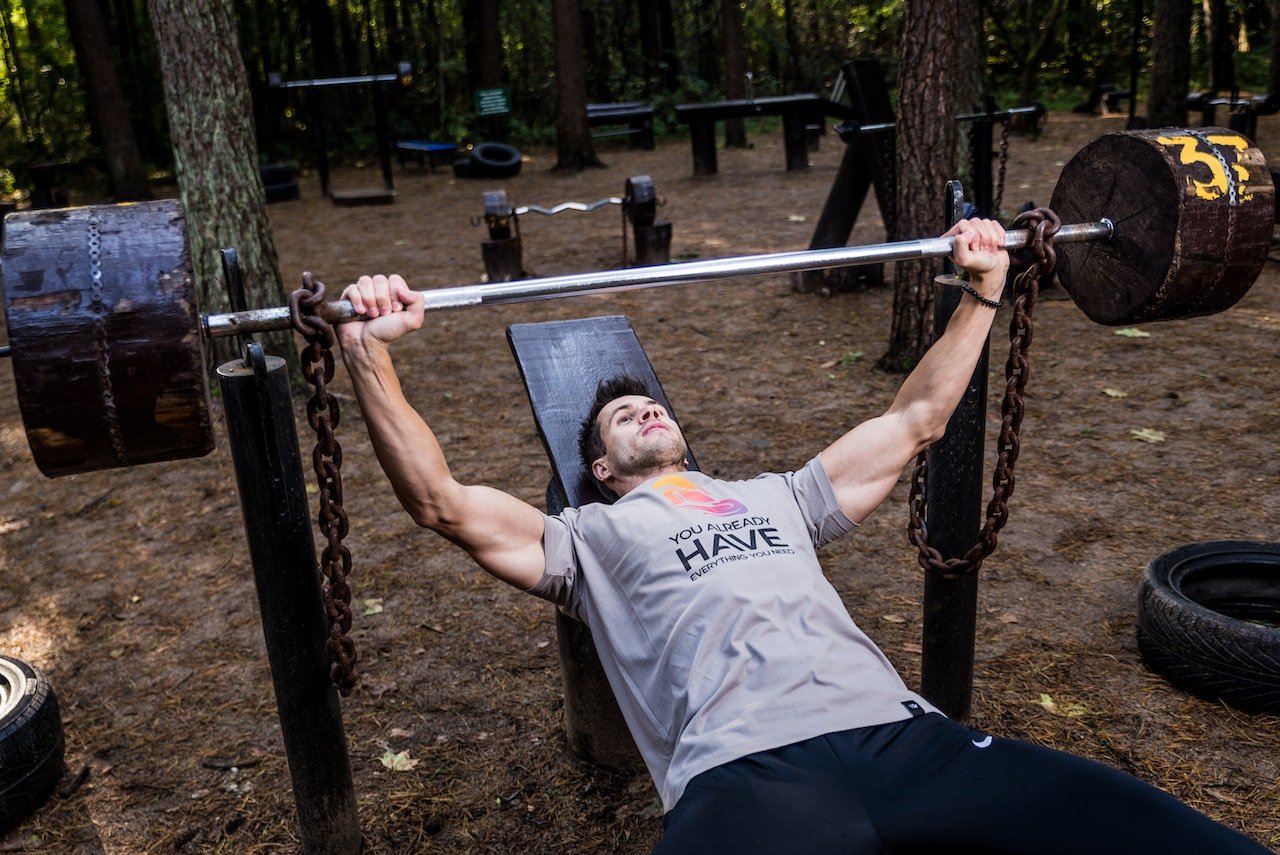
The upper chest is one of those often neglected areas of the body, but if trained in the right way, it can transform the look of your upper body. We have compiled a list of the best exercises for upper chest, full of information, including how to do each exercise in detail and the benefits of each one.
This list was compiled based on the exercises that will give you the best opportunities maximum strength and size.
Table of Contents
Upper chest anatomy explained
The chest muscle is made up of two muscles, the Pectoralis Major and the Pectoralis minor. The Pectoralis Major, consists of the Sternocostal Head (mid and lower chest) and the Clavicular Head (upper chest). The muscle fibers in them travel at different angles to each other, therefore they have to be worked in a different way in order to make sure you are properly overloading both parts of the muscle.
A lot of people will do 3-4 sets of flat bench, maybe some flys and then maybe use the chest press machine and give up. I have seen it time and time again.
If you want to build a complete chest to be proud of, you will need to incorporate a couple of these into your workout. For a real test, you could even try a circuit.

Incline bench press
Incline bench press is a great exercise for building that upper chest. You will want to set the bench at an angle of between 15-30 degrees at most, anything more and you will start activating your deltoids instead of your pectorals.
This is done exactly the same as a flat bench press, just at a different angle.
Lay on the bench, holding the bar at just wider than shoulder width. Push the bar until your arms are fully extended, then lower back down until the bar nearly touches your chest.
A good tip for maximising gains on the bench press is to imagine you are instead trying to push yourself away from the bar, pushing your back into the bench whilst concentrating on the squeeze in your chest muscles. That mind muscle connection is very important in every single one of these exercises.
Take a look at this video which shows what good form looks like.
Low to high cable flyes
Flyes are another exercise that you cannot do with out when it comes to building that upper chest as they work the muscle in a completely different way compared to presses.
To do the Low to high cable fly:
You will need a double cable machine, put both cables in the lowest possible position on the rack, using the same or similar attachments to the one shown in the below video.
Start with your arms down by your sides, holding the grips, with your palms facing inwards towards your body.
Pull the cables, keeping your arms stiff, but slightly bent, up and away from your chest, to just below shoulder height.
Pause for 2 seconds and focus on that squeeze in the middle and upper chest.
Return your arms to the original position in a smooth, controlled manner.
Take a look at this video below which shows good form for Low to high cable flyes
Landmine rainbow
Landmine rainbows work the muscle fibers of the upper chest in a very different way from presses and conventional flyes. Combining all 3 exercises into a routine will allow for maximal exhaustion of the muscle group.
Start by holding the end of the barbell in both hands down to the left hand side of your body, with the weight resting on the lower hand. Raise the bar up as high as you can get it in an arc or rainbow movement and efficiently swap the weight onto the other hand, bringing the bar back down to the right hand side of the body.
That is one rep.
Repeat this until you have completed the desired amount of reps.
The video below shows this in perfect form.
Incline DB hex press
As the name gives away, the incline DB hex press is another dumbbell press, but with a bit of a twist. With your hands facing inwards and pressing the weights together, this hits the muscles in a different way compared to your standard bench press.
Start by laying on a inclined bench set at about 30 degrees.
Bring the weights to your chest, palms facing each other so that the weights are touching each other.
Push to the top, avoiding fully locked straight arms, wait a second and then slowly bring the weights back down to your chest.
This is one rep. Continue for as many reps as required.
Take a look at the below video for an idea of what good form looks like for this exercise:
Dips
Dips… you either love them or you hate them right? As difficult as dips may be, they are a great exercise, and they don’t only work the upper chest. You will also be hitting the anterior deltoids, triceps, rhomboids, lats and your Teres major.
Start by positioning yourself in an upright position on some dip bars.
To target your upper chest, lean slightly forward and flare your elbows out so that they are not as tight to your sides as they would be if you were doing regular dips targeting your triceps.
Then lower your body down to a right angle, making sure you don’t go any lower, as this can lead to strains and injuries in your shoulders and rotator cuffs.
The below video demonstrates perfect form with dips.
Decline pushups
Decline pushups are a brilliant way to absolutely exhaust your upper chest.
The great thing about this exercise is that you are moving your whole upper body throughout a constantly changing angle, so again, it works your chest in a completely different way to all of the rest mentioned so far. At the bottom end of the press you may be pushing at a 45 degree angle and by the time you get to the top you may be at 90 degrees.
They are performed in the same manner as a normal pushup except you rest your feet on some form of raised platform.
A good tip is to try multiple sets, each time raising your feet to a higher angle until you get to a maximum of about 45 degrees while at the bottom of the pushup.
Summary
All of the above exercises are great for building a massive, strong upper chest. Now you just need to decide how much weight and volume to do, depending on your goals. If you want to find out more about how to build muscle check out some of our training and nutrition articles, or if you want some ready made workouts, click here, we have you covered
Gym tips for beginners
Gym tips for beginners
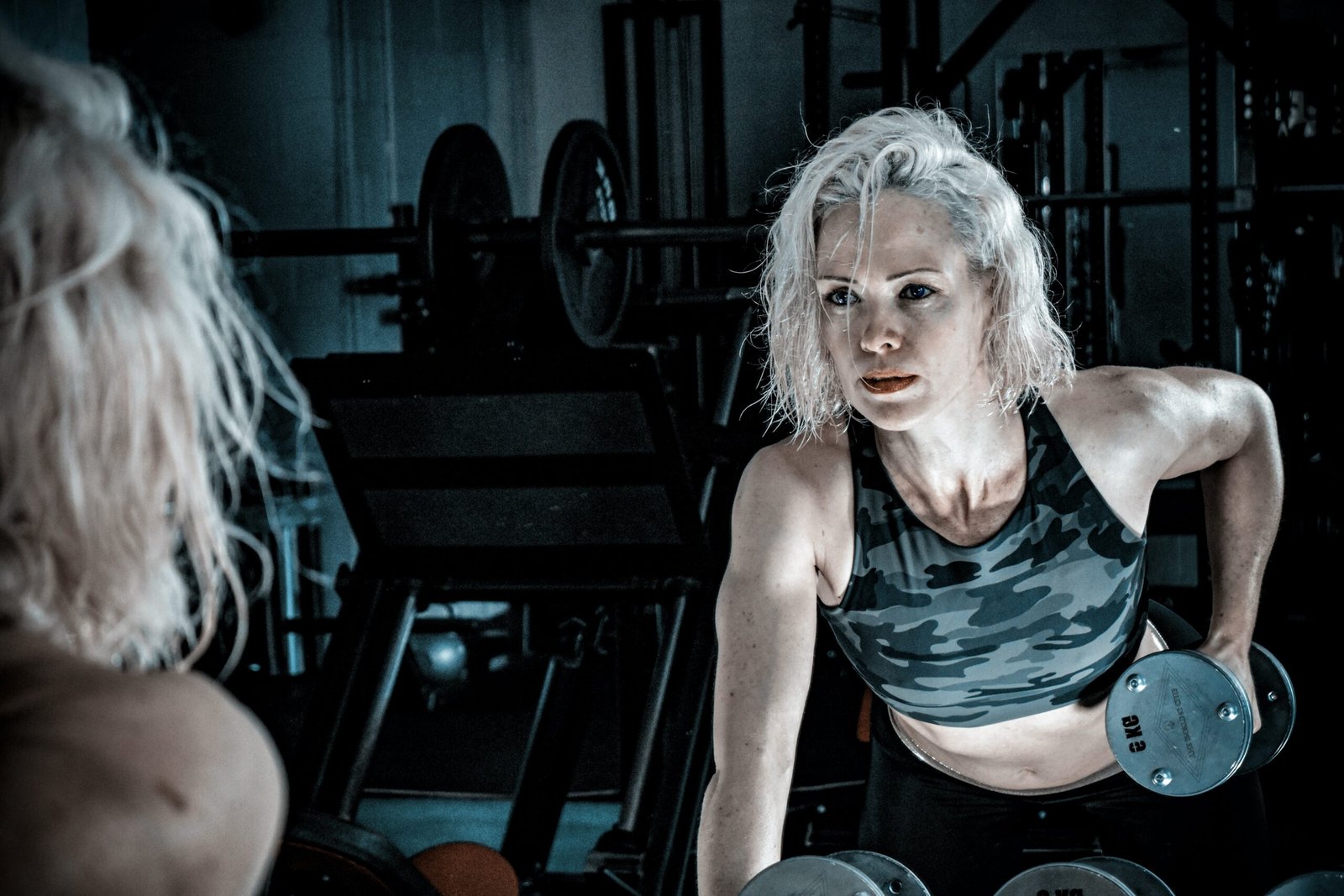
Believe it or not, we have all been there. Everyone has to start from day one and we understand the struggles you are facing. After all, who wouldn’t want to be fit and healthy without the effort?
Unfortunately, only very few people in the world are gifted with great genes, for us common mortals there are only two ways to stay healthy and that’s through exercise and nutrition.
However, if you are reading this article you are already two steps ahead: firstly, you are in the right mind-set and are ready to show up for yourself; secondly, you will benefit from these 10 tips which will hopefully make training a lot easier and enjoyable that you want to show up again and again.
1. Be comfortable – be confident
Whoever you are, entering the gym for the first time can be quite intimidating. Perhaps all those muscles around you make you feel unease, perhaps you don’t know what to do or you are not confident with your body.
Don’t worry, you are not alone. The first tip on our list is:
Make sure you are wearing something you are not only comfortable in training with but also something you are comfortable with in general. Put on your favourite t-shirt and leggings, or tracksuit, whatever makes you feel good in. Remember some exercises or stretching will require you to bend or be in awkward positions so just bare that in mind.
2. Music for energy
It’s a good idea to get your favourite playlist ready ahead of your session. Listening to your favourite music not only can boost your energy levels, it can also keep your mind occupied and make you forget your surroundings so that you focus only on yourself and your training. One thing you should not forget is: don’t single along to the chorus too loud!
You can find some awesome playlists here to get you motivated:
3. Set achievable goals
Before you even step into the gym, we recommend you set yourself achievable goals and have at least an idea of the training you would like to do.
People go to the gym for a variety of reasons: lose weight, build muscle, tone, increase strength or simply to get their body moving and improve both physical and mental health. Whatever your goal is it must be a SMART goal: Specific, Measurable, Attainable, Relevant(or realistic) and Time-bound. In other words, have a specific goal in mind for this session and keep your long term goal only at the back of your mind; take it easy, don’t do too much too soon, and have real expectations. You need to be able to quantify your goal and have a short to mid-term deadline to achieve it. For example, if you are into weight lifting, aim to increase your weight or reps by a small amount each time.
Whether you are into cardio, weights, resistance training or you simply don’t know it’s important to do a bit of research beforehand to make sure you get to the gym with a plan so that you don’t waste time. This will also help you with your confidence as you won’t be wondering aimless around the gym.
There are plenty of videos on youtube that can help you select the best exercises for your goals.

4. Warm up and stretching
One thing we strongly recommend beginners (or just about anyone) to do is warm up. This is particularly important to prevent injuries by making sure your body is ready to exercise. Start by mobilising the areas and body parts you want to exercise by doing gentle movements.
Equally important is to stretch after your gym session: this will help to gradually slow down the body, increase flexibility and reduce pain from exercising. There are a lot of videos on the internet that can guide you through.
Find a quiet corner of the room where you can spend some time practicing these movements, a mirror will be your best friend!

5. Hydration
Keeping hydrated is very important; whichever time you chose to exercise during the day make sure you re fully hydrated before you start your session. Water is like fuel for your muscles it helps bust energy levels and prevents cramps.
Drinking water during and after exercise is just as important. When your temperature goes up whilst exercising, your body will try and cool itself down through sweat. As sweat evaporates from your skin, you also lose body fluid. It’s important to refuel your body with water to reduce the stress on your body, increase performance and improve body function.
Almost all gyms nowadays have water refills. Check out some of the best water bottles on the market and make sure you always bring one with you when working out.
6. Buddy up
Training with a friend is a great way to workout. Not only it can be more fun but it will also help to keep yourself motivated during your session. In fact, you are more likely to stick to your commitment and less likely to miss planned workouts simply because you don’t want to let down your friends.
You are also more likely to succeed in achieving your goals as you will be working out harder with someone else around you.
If you don’t have gym buddy yet, don’t worry. Gyms are also a good place to build new friendships with someone who is already sharing a common interest to you.
If, however, you are someone who loves to work out alone then that is absolutely fine too!
7. Nutrition
This tip could be an article on its own.
To put it simple: whichever your goal is, you need to pair up your training with good nutrition.
When it comes to keeping fit and healthy, 80% of the work is done in the diet and the remaining 20% by exercising. This is why it is important to maintain a balanced diet to fuel your body with the right energy every day.
Exercise and diet go hand in hand and you can’t expect miracles if you don’t eat well around training. There is a famous saying: “You can’t out train a bad diet” and it is absolutely true.
There are many different diets out there on the internet, but in reality the most healthy diet is a balanced one, where you are getting all of the nutrients your body needs.
The Mediterranean diet is a great place to start, it works on a pyramid system where at the bottom you have a big portion of healthy food such as vegetables, legumes and fruit which should be consumed daily and at the top you have the refined sugary food which should only be consumed in small portions on weekly basis.
The most important factors for any diet when you are training:
Eat the right amount of protein
Eat enough fruit and veg
If you are trying to lose weight – be in a caloric deficit
If you are trying to gain muscle – be in a caloric surplus of around 300-500 calories

8. Good days and bad days
Nobody is perfect. Everyone has good days and bad days at the gym or just in life in general. Some days we are full of energy, get to the gym super excited and ready to go and have an amazing workout. Other days we might feel more sluggish and tired and don’t really want to leave home for the gym. It’s perfectly normal to have these days and they are just part of our modern life. It’s important though to analyse the causes of these bad days so we can address the issues behind them and get back on track as soon as we can. Potential causes of bad gym days can be: sleep, nutrition, hydration, physical and mental health.
Sleep deprivation is one of the main factors in poor training and poor results; if we don’t get good quality sleep our bodies won’t recover and as result we won’t feel energised. It’s important to try and get enough quality sleep every night.
Nutrition is the fuel for your body and brain. If you have a poor diet which lacks in good vitamins and nutrients, your performance is definitely going to suffer. If you have long working days with no time to prepare meals and revert to fast food and junk food all week then your body will react to it making you feel less energised and less inclined to workout. Even when it comes to food, we all have cheat days and indulge in that chocolate bar or pizza every now and then however it is important to make sure we are eating a balanced diet overall.
Water intake plays a good part as well. Our bodies are made up of 60% of water; if you are dehydrated it becomes more more difficult to move oxygen and blood around. It is important to drink plenty of water especially when exercising as it helps with performance and makes exercise feel easier.
Health, whether physical or mental, plays a fundamental role in your training. If you are not feeling well, your training will suffer. Make sure you take time for yourself to address any health issues you may be going through and focus on your mental wellbeing and managing your stress levels. Exercise can be a form of stress relief and help with your mental or physical health, sometimes even a gentle walk around the park can make you almost instantly feel better. However, if this is not right for you when you are having one of those so called “bad days” why not try things like meditation or journaling to help you feeling better.
To sum up, if you find yourself having a bad day or a bad week, just take some time to reflect on the cause of it and try and make some positive changes around it if you can. Don’t beat yourself up if you miss a few workouts or you don’t perform the way you want, just remind yourself this is part of the journey and focus on getting better and back on track as soon as you can.
9. Take progress photos
Our next tip is: throw away the scales! Or at least stop focusing on them.
Whether your goal is to lose weight, gain weight, change your body composition or just stay fit in general, measuring your progress through scales is not always the best way. Scales are not an accurate way of measuring your achievement as those numbers don’t distinguish between body fat and muscle. We find it much less stressful and enjoyable to take photos. This way you can measure your progress over time by comparing photos taken at different times in your journey. Looking at yourself in the mirror every day won’t make all the small changes that your body has gone through as obvious, as they happen slowly.
Summary
To summarise, stepping foot in the gym, if it does not feel natural, can be very overwhelming, but that feeling goes away with time. Within a couple of weeks I guarantee you will already be feeling 10x more motivated to walk through those gym doors. Give these tips a try, you never know, they may mean the difference between quitting early and sticking it out and becoming a gym addict.
How to build muscle – A complete guide
How to build muscle – A complete guide
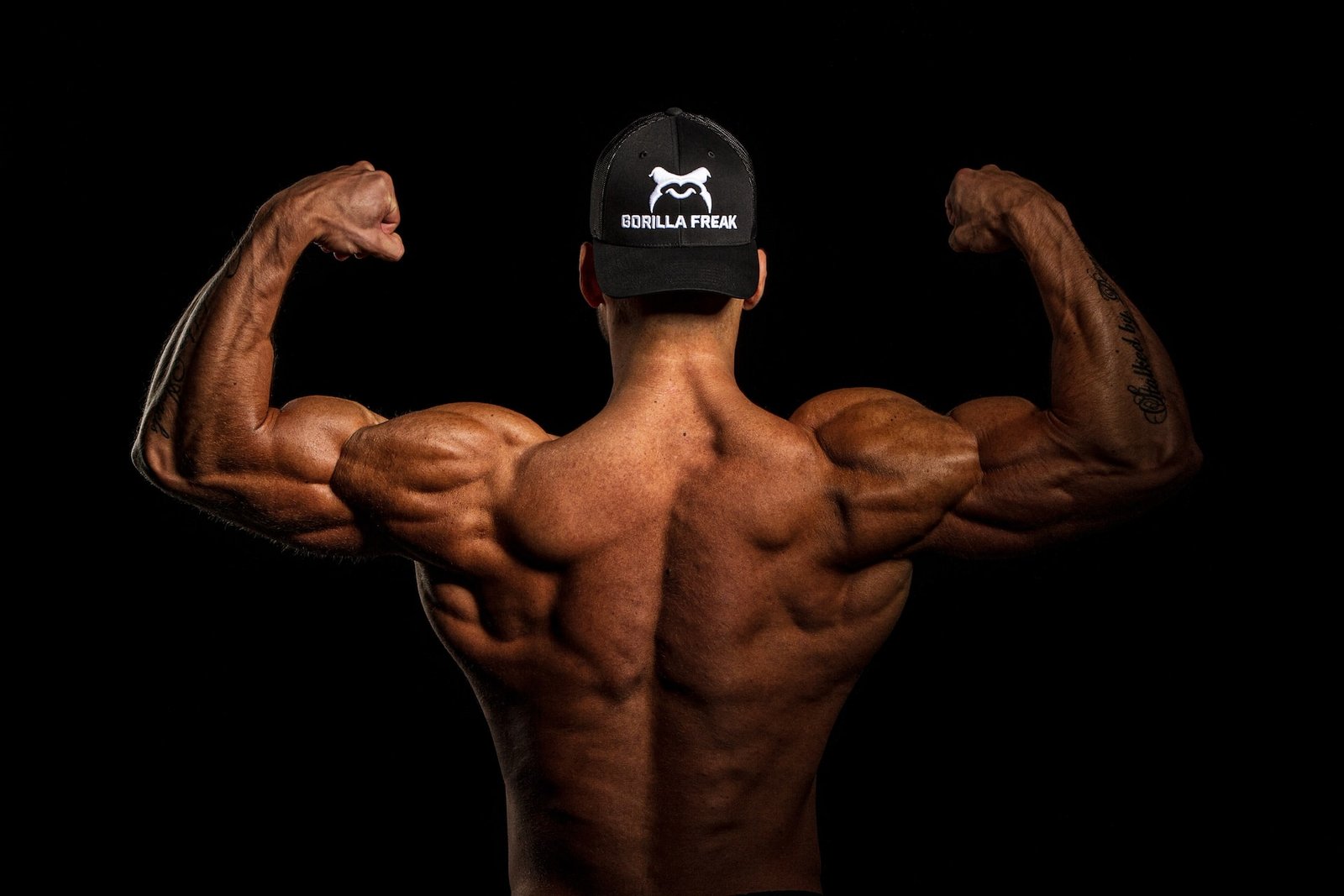
Building muscle can actually be a pretty complicated science, requiring you to do multiple different things consistently. Failing on any one of these things can have you guessing why you are not making progress despite working so hard in the gym. Here is our complete guide on how to build muscle, to make things easier for you.
Building muscle, also known as “Hypertrophy” is possible only as a result of doing the right amount and type of training in the gym, eating the best foods and getting the correct amount of rest. We are going to break down each of these into smaller understandable topics, so that you can make sure you are building as much muscle as possible.
What Is Hypertrophy?
Hypertrophy is defined as “The enlargement of an organ or tissue from the increase of size of its cells.”
Muscular hypertrophy therefore is the growth of muscle cells. There are two types of hypertrophy: Myofibrillar and Sarcoplasmic, but the one that most bodybuilders and strength athletes are interested in is Myofibrillar.
This involves the activation of the contractor muscles and Myofibrillar hypertrophy results in strength and speed increases as well as muscle size increases.
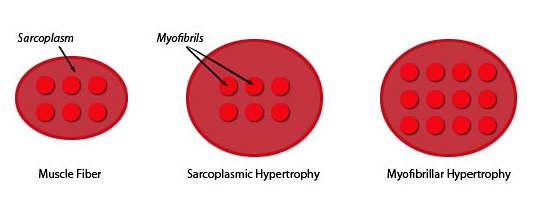
In order to cause Hypertrophy one must actually cause tiny micro tears and damage the muscle they are trying to grow. This is called mechanical damage. This is done by lifting weights. These micro tears then repair and in the process the cells get bigger.
Another important factor is metabolic fatigue, which happens when the supply of ATP (a form of available energy) in your muscles is exhausted. Your muscles in basic terms realise that next time you need to be able to have more available and grows the cells to account for this.
So enough of the technical stuff for now, how do you make those muscles grow?
How to train for muscle growth
With this knowledge now available to us, what is the best way to train, to build bigger muscles?
High volume workouts consisting of lots of reps and sets in order to cause metabolic fatigue, or High weight, low rep workouts where you train until failure?
The answer is yes. To both questions. The truth is that you can create muscle growth by doing low weight, high volume workouts or high weight, low rep workouts. Both have been proven in studies to be just as effective as each other, see below for an explanation

How many sets for hypertrophy
High volume workouts are great for hypertrophy. This study showed that high volume workouts result in significant increases of muscle size when compared to lower volume workouts, up to a certain threshold, at which point the benefits of volume level off. This is why 10×10, otherwise known as german volume training, works so well. It causes both mechanical damage and metabolic fatigue. What this study also showed though, was that there was no comparative increase in strength when compared to other types of training.
The negative? It can be very boring, and time consuming and might lead to you giving up or not completing the volume required.
High weight, Low rep routines are also proven to be great for hypertrophy and also specifically target strength. This study compared two groups, one doing lower weight loads and one doing higher weight loads. The study found that both produced hypertrophy but the higher weight load group produced a bigger strength increase, measured by the increase in the 1 rep max weight on the bench press over the period of the study. It hypothesised that by combining both low and high load sets, this would be optimal for maximising muscle growth.
We have looked at a huge amount of information over the last 20 years including hundreds of studies and the best way to maximise muscle growth appears to be using a combination of both, but the most important thing is to make sure that you are always incorporating progressive overload.
How to build muscle using progressive overload
Progressive overload, in simple terms is just making sure you do more each time, making the workout more difficult, over a period of time. Your muscles will respond by getting stronger and bigger to deal with the increase in work. If you aim to improve even just a little every time you go to the gym, and you do this alongside all of the other things mentioned in this article, then you are pretty much guaranteed to gain lots of muscle.
The “more” can come from any one of 3 different ways of making the exercise more difficult. The first and most obvious way is by adding more weight. When doing this it is important not to add too much too quickly as this can affect your form, which in turn could mean that the exercise is not working the muscle in the way it is supposed to. Go for small increments. This has been proven in many studies including this 2011 study.

The second way to overload is by increasing the amount of reps in a set. Try adding 1-2 more reps when compared with the last workout.
The third way is time under tension. This causes more mechanical stress on the muscle and induces muscle growth just as much as adding more weight or reps. For example, on a bench press, if you usually lower the bar back to your chest in TWO seconds, make the descent take 3 or 4 seconds for one of your last sets.
Progressive overload, combined with good nutrition are the most vital two aspects of muscle growth.
Best exercises for muscle growth
A lot of studies have shown that compound exercises like squats, deadlifts, bench press, barbell rows etc produce better results than concentrating on isolation exercises alone, like bicep curls.
Compound exercises also allow you to lift heavier weights, which has been shown to increase testosterone, and in turn this helps with hypertrophy. Compound exercises will help with bone and ligament strength as well. They will also help to prevent imbalances, and allow you to notice if you start to get any.
However, this does not mean that you should neglect isolation exercises, as they still have their benefits.
The most effective and simple training split would be a Push, Pull, Legs split performed 2x per week.
This could consist of something like this:
Monday – Push – (Bench press, Shoulder press, Tricep exercises etc)
Tuesday – Pull – (Deadlifts, Pullups and lat pulldowns, Rows, bicep and forearm exercises etc)
Wednesday – Legs – (Squats, Leg Press, Calf exercises etc)
Thursday – Rest day
Friday – Push
Saturday – Pull
Sunday – Legs
For more ideas on different training splits and exercises to incorporate to produce maximum muscle growth, check out our workout articles.
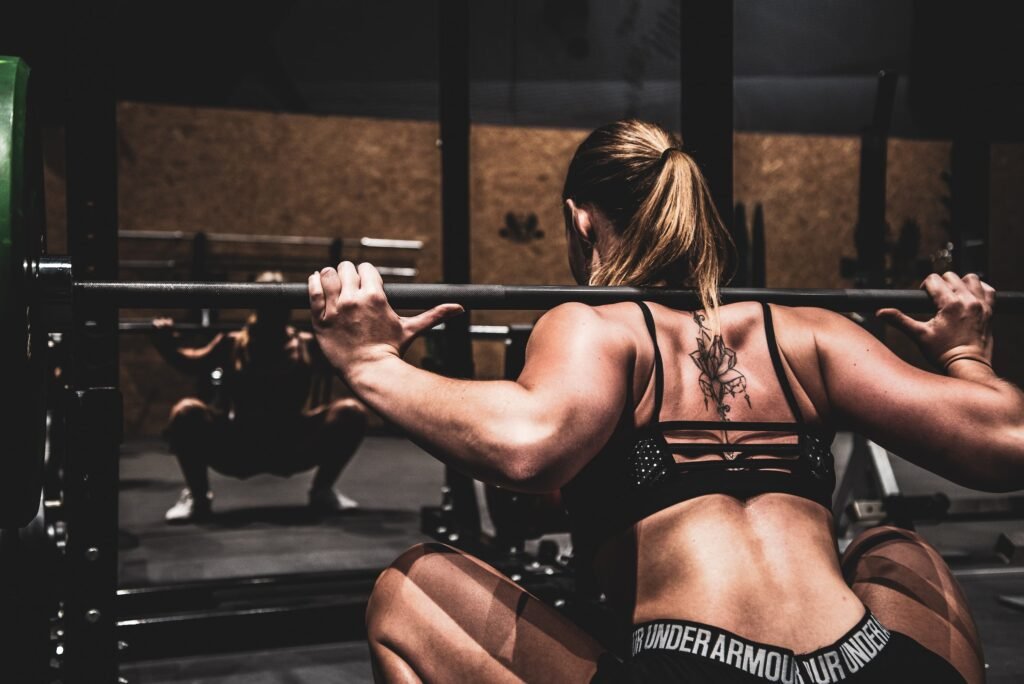

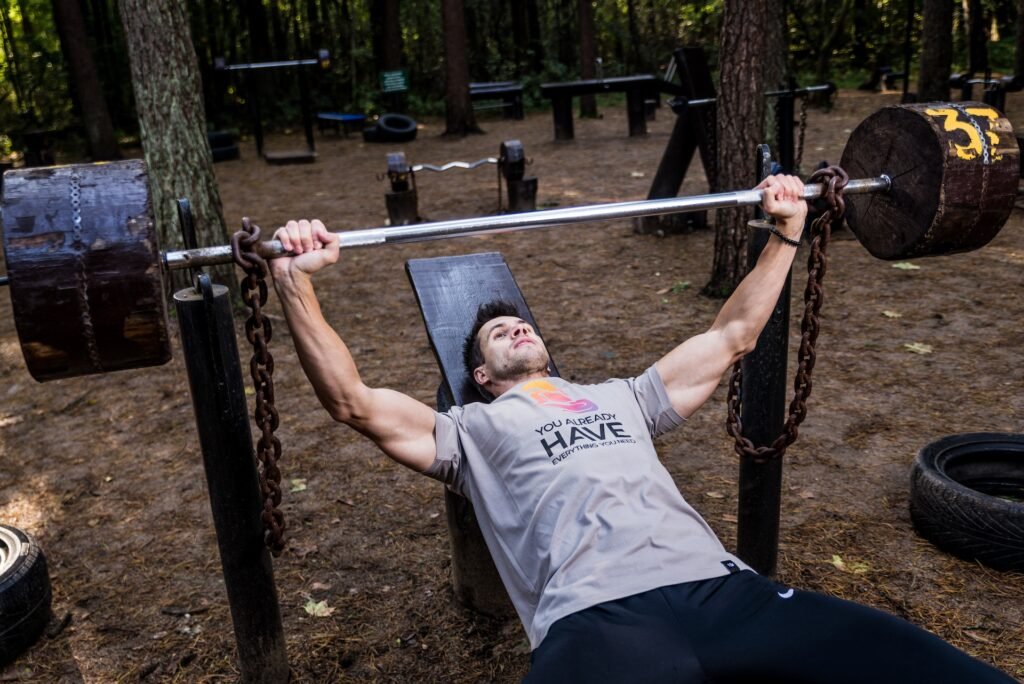
Food and nutrition for building big muscles
Nutrition is one of the most important aspects of everything mentioned so far. You could spend as much time as you want in the gym, doing a perfect amount of sets and reps, of all of the right exercises, but if you don’t get the nutrition right, you will not get the results you are looking for. To gain muscle, in the ideal circumstances, you need to be in a calorie surplus of between 300-500 calories. You also need the right quantities of the 3 important macronutrients: Carbohydrates, Fats and Protein. This is backed up by evidence from scientific research including this study, which concluded a calorie surplus of between 1500-2000kj (358 -478 cal) was advised when trying to gain muscle.
The best way to track your calories and macronutrients is via a tracking app such as MyFitnessPal – it is near impossible to accurately track your intake without using an app like this and you will likely fail if you try and just remember everything and count in your head, especially if you are relatively new to training.
Best carb sources for muscle gain
Carbs are a very important part of building muscle. Not enough and you won’t have the energy required to do those last 3 reps, you also might not have enough calories to put yourself into a calorie surplus. Too much and you might put yourself in too much of a surplus, which could cause you to put on lots of unwanted body fat.
For information on optimum macro nutrient ratios please see our article What are the perfect macronutrient ratios for building muscle.
Great sources of carbs are:
Sweet Potato, Brown rice, quinoa, beans.
Good sources of carbs are:
Potato, white pasta, white rice,
Ok sources of carbs are:
Bread
Try to avoid high consumption of carb sources high in sugar such as sweets, ice cream and fizzy drinks. These might be good for a very short energy hit, but they cause your blood sugar to suddenly rise and then crash and aren’t as efficient or healthy as the sources listed above. An added bonus is all of the extra vitamins and minerals in carb sources such as sweet potato and Quinoa.
We will refrain from calling any sources of carbs “bad” as in moderation and balance all carb sources can be used. There are times (straight after training and in the morning), where a some sugar is actually pretty useful, but obviously you don’t want to overdo sugar.
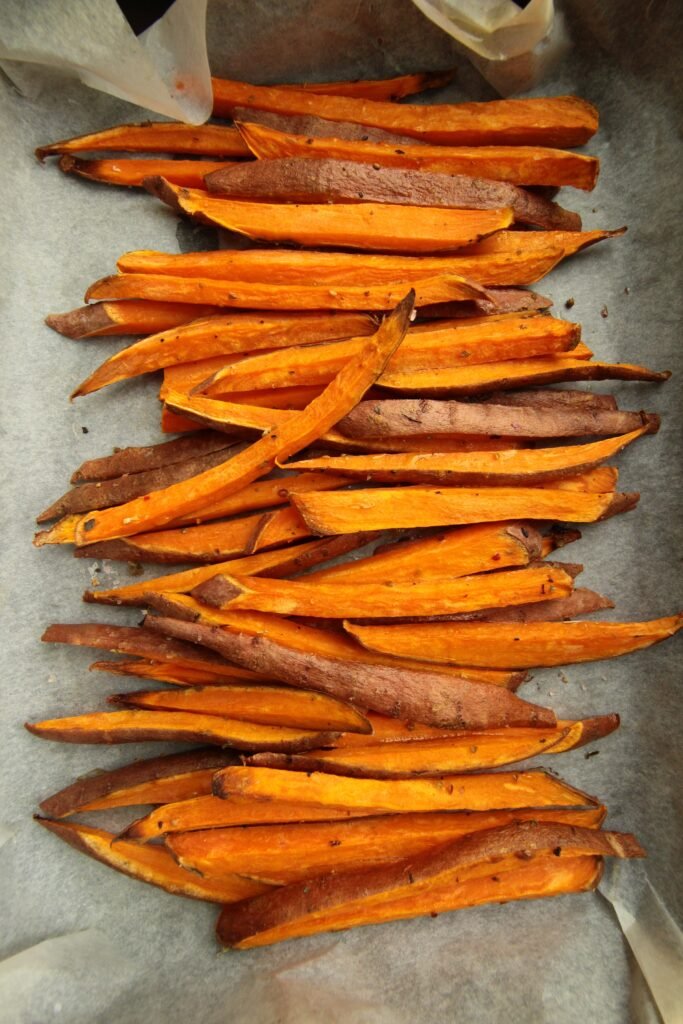
Best protein sources for building muscle
The best protein sources are always going to be from animal sources. This is because they contain a full amino acid profile, unlike vegetarian protein sources. Amino acids are basically the building blocks that make up proteins and you need a certain amount of each in order to maximise muscle gains. Although you can get enough of each amino acid on a vegetarian bodybuilding diet, it is MUCH harder, and you have to eat a very wide variety of sources and need a lot of planning to do it.
The best sources of protein are:
Chicken (leaner sources like breast are better)
Beef (full of vitamins, minerals and creatine, all of which help you build muscle)
Eggs
Milk
All of these protein sources also contain other helpful nutrients that are useful for building muscle, such as B vitamins, creatine, vitamin D, Carnosine, Heme Iron. Some of these will be really hard to find, if not impossible on a vegan diet.
Best fat sources for gains
Fats are also important when it comes to building muscle, but they often get characterised as the enemy by fat loss companies. You just need to make sure you are getting the right types of fats.
Fats assist by helping you to absorb vitamins, production of hormones, protecting cells and nerves, muscle movement
A study in 2021 showed that men who followed a low fat diet had an average of around 63% less testosterone than those who followed a higher fat diet
You should aim for between 15-20% of your calories to come from healthy fats. If you want more info on healthy fats, check out our article on dietary fats.
Great sources of healthy fats:
Almonds
Olive oil
Eggs
Avocado
Seeds
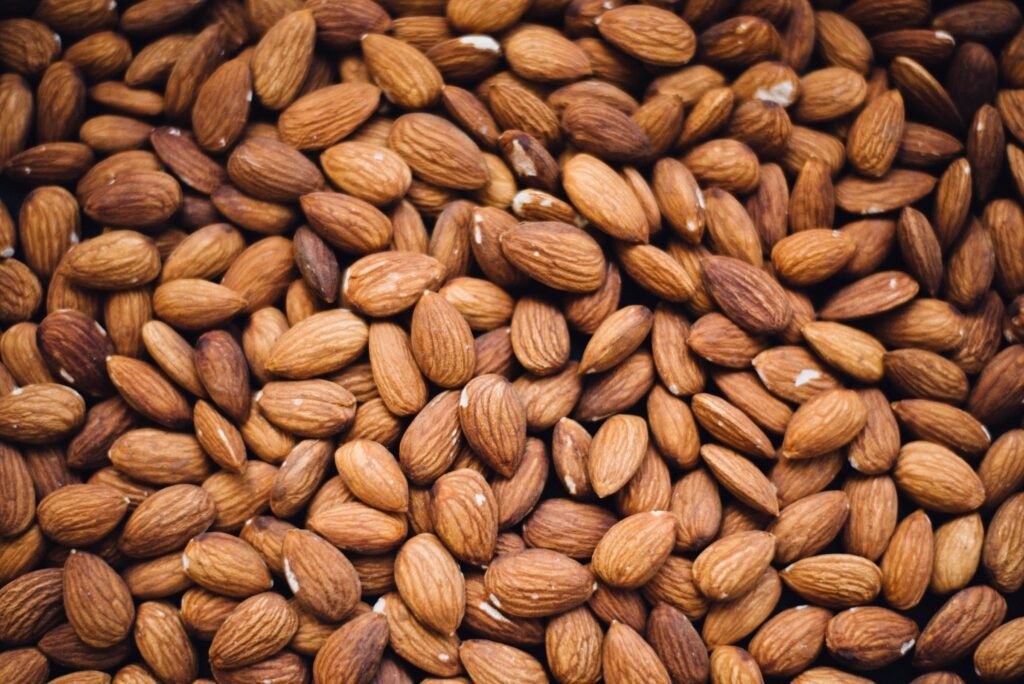
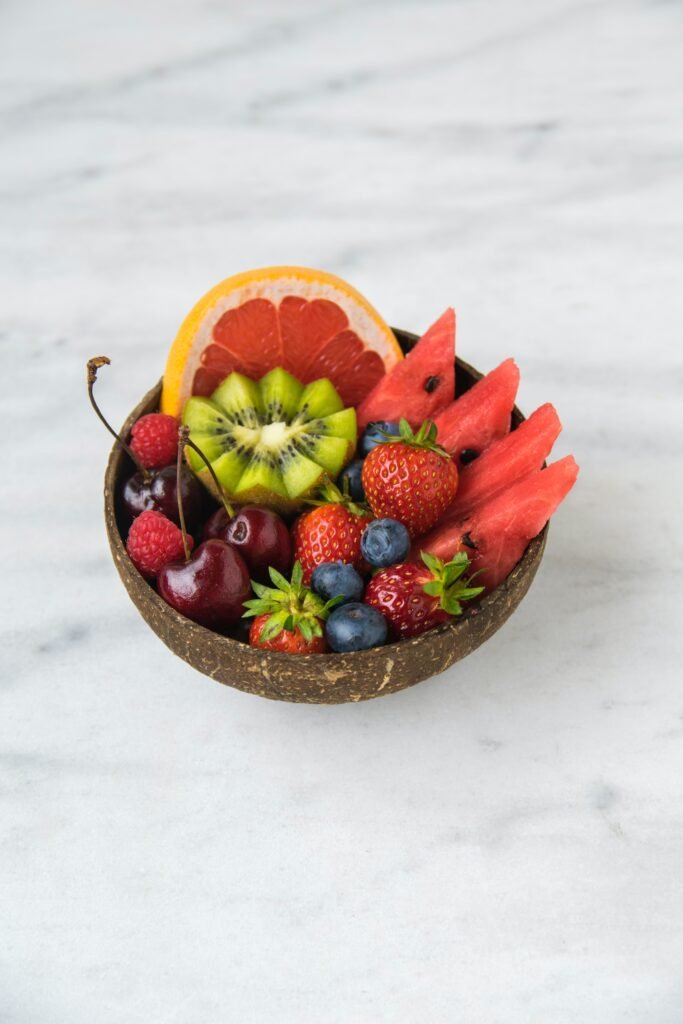
Fruit and Vegetables for bodybuilding
Fruit and Vegetables are also quite important for bodybuilding as this is where you are going to get the vast majority of all of the vitamins and minerals needed to build your body and have enough energy to train.
These are often the most overlooked foods when it comes to building muscle.
This is a huge topic of its own, and we don’t have the time and space to fully explain all of the ins and outs of every vitamin and mineral here. If you are interested, take a look at some of our articles on nutrition, including superfoods, best foods for vitamin D and best foods for iron.
Some of the best fruit and veg sources for muscle building are:
Bananas
Broccoli
Spinach
Kale
Blueberries
Watermelon
Rest and muscle growth
Rest days are just as important as training days. If you don’t get enough rest between workouts, your muscles will not be able to repair and rebuild quick enough for you to grow or get stronger.
During your rest periods, the micro tears mentioned earlier in this article are repaired and the muscle growth takes place. If you don’t get enough rest, the growth will be reduced and sometimes completely non-existent.
To guarantee enough rest for your muscles, train different muscle groups on different days, for example you might do a push day on Monday (Chest, triceps and shoulders), a pull day on Tuesday (back and biceps), and a leg day on Wednesday. This way each muscle group gets at least two rest days before you train it again. For everyone that is natural, i.e not on performance enhancing drugs, it is best to take at least one full rest day per week as well.
Signs that you are not getting enough rest include: Trouble sleeping, muscle soreness that has not gone away since your last workout, plateaus or any reduction in strength
Severe overtraining, where you train at very high volume and intensity and don’t get enough rest, can actually make you very ill.
Good Hydration is key to muscle gain
Proper hydration is key to building muscle for a huge amount of reasons. It could have its own article.
Water is one of the most important compounds in your body. It makes up around 55-60% of your whole body mass. It helps your bones, joints, ligaments and muscles.
Good hydration will help to reduce fatigue, it helps with reducing body temperature when you train and get hot.
When you do weightlifting intracellular water is pushed out and reduced. If this is not replaced, then this can lead to reduced protein synthesis, which is a key part of the process of hypertrophy.
For anyone doing regular weightlifting, you should aim for at least 4 litres of water a day, but don’t drink too much, too much water can be bad for you as well, you can even die from it. A good rule is to look at your urine, if you have managed to make it clear, then you are hydrated enough. If it starts to go yellow, you need to drink a bit more.
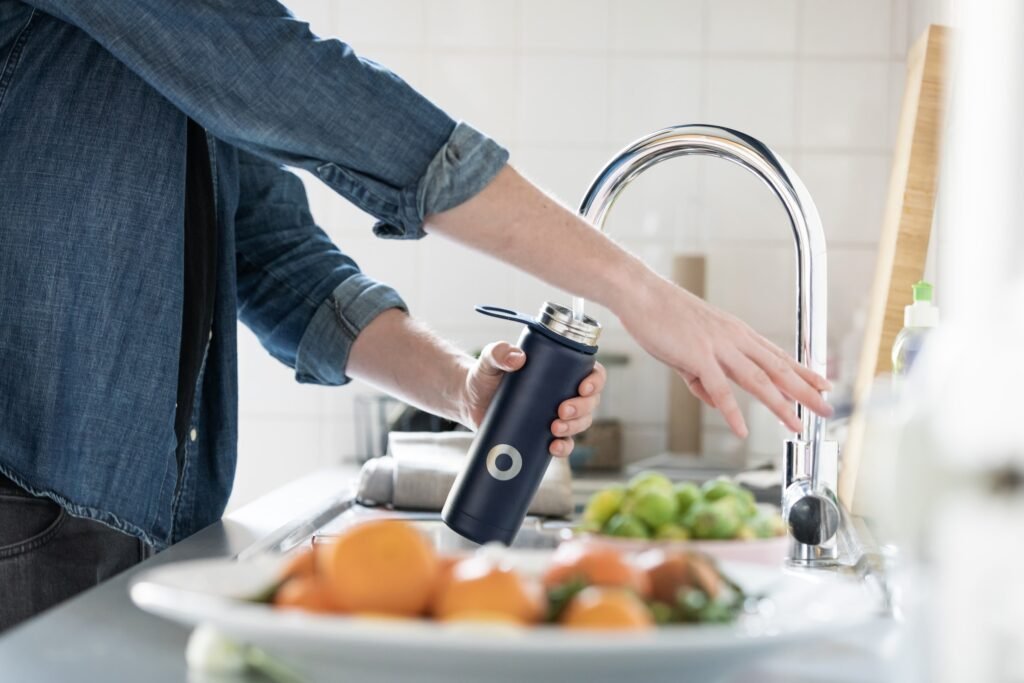
Summary
In short… to gain muscle, you need to eat enough calories and protein, get enough rest, and train hard, incorporating progressive overload. If you follow all of the tips outlined above, you cannot go wrong!
Now you know how to build muscle!
For bodybuilding or fat loss recipes check out our nutrition articles.
For ideas about training regimes and exercises to give your current regime a boost, check out our workout articles.
